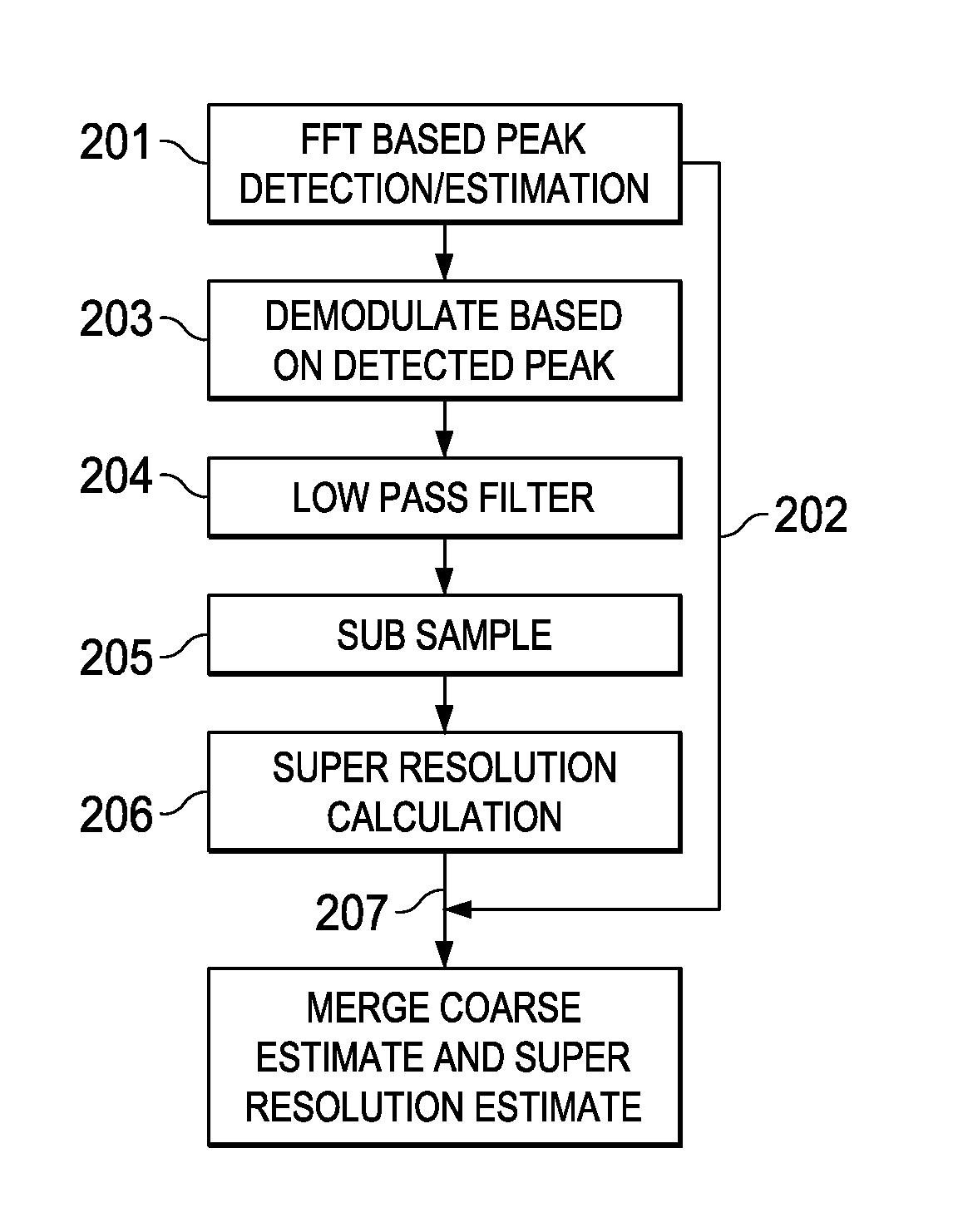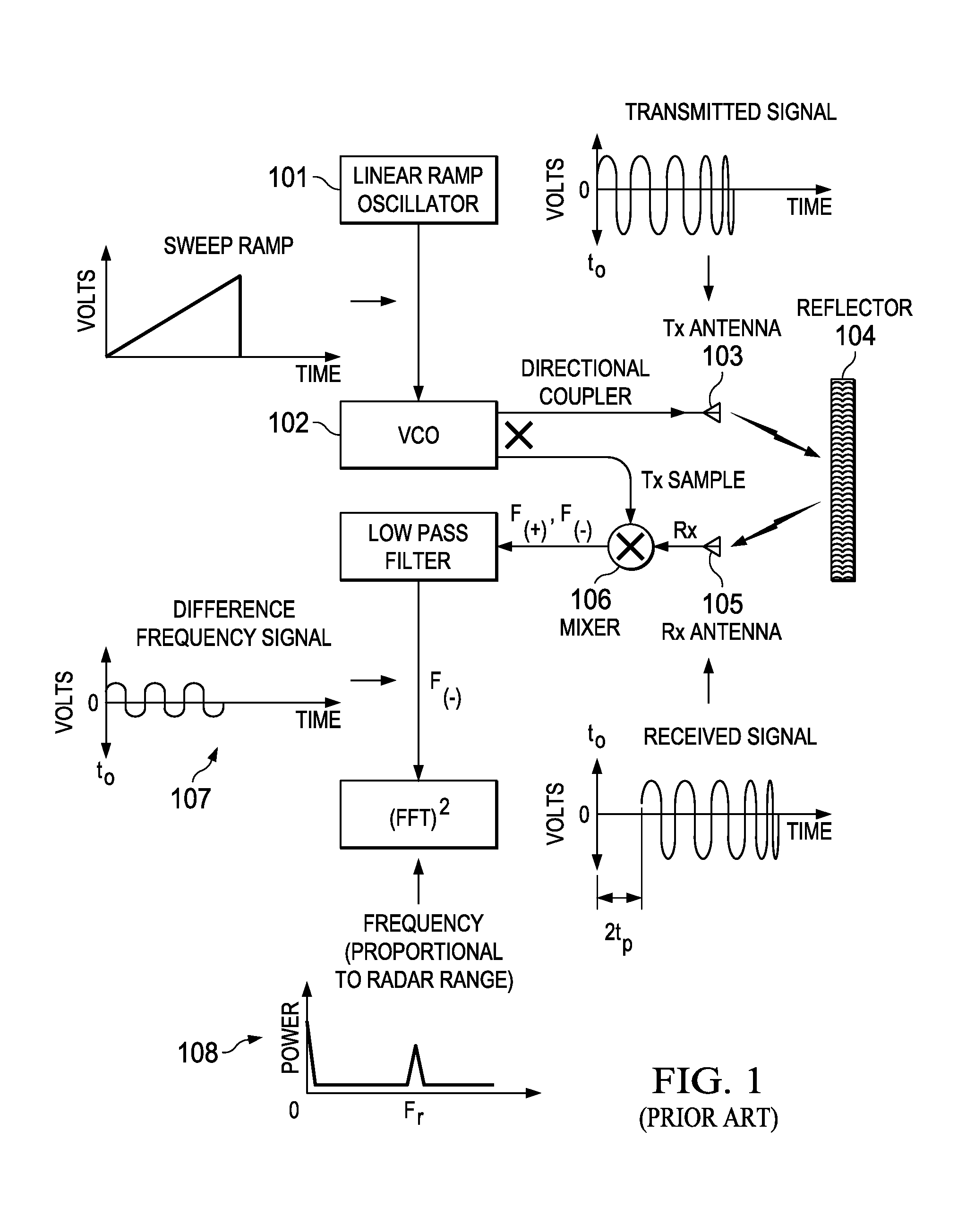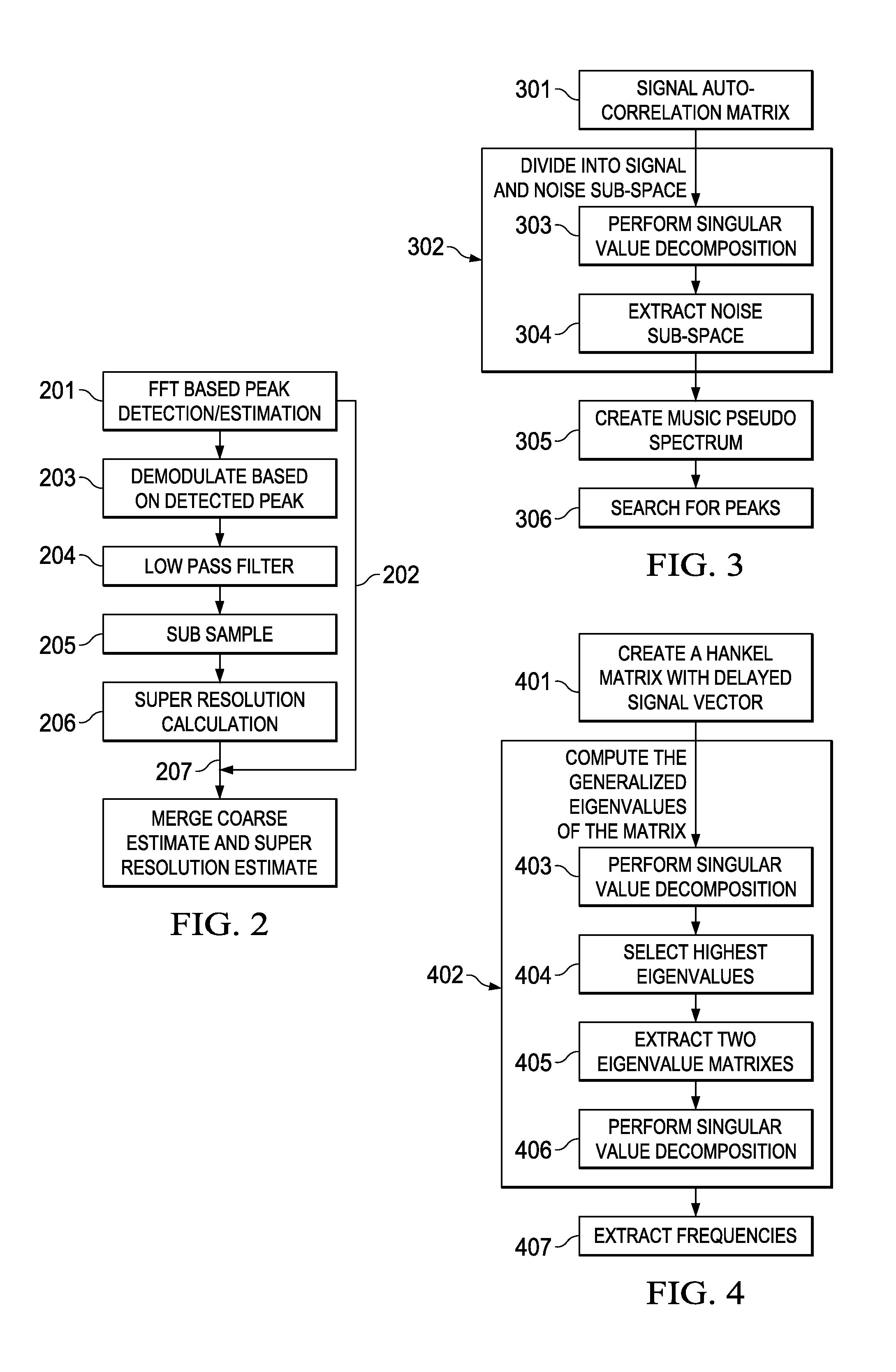Low Complexity Super-Resolution Technique for Object Detection in Frequency Modulation Continuous Wave Radar
a frequency modulation, continuous wave radar technology, applied in the direction of reradiation, measurement devices, instruments, etc., can solve the problems of inability to find smaller objects in the presence of close by larger objects, inability to find small objects in the presence of larger objects, and inability to implement techniques in practice, etc., to reduce the computational complexity of the search, reduce the number of operating data points, and reduce the computational complexity
- Summary
- Abstract
- Description
- Claims
- Application Information
AI Technical Summary
Benefits of technology
Problems solved by technology
Method used
Image
Examples
Embodiment Construction
[0014]FMCW radars are often used to determine the location of object and its speed of movement. These radars are used in automotives, industrial measurements, etc. A typical FMCW technique is shown in FIG. 1.
[0015]A chirp signal generated by ramp oscillator 101 and Voltage Controlled Oscillator (VCO) 102 (where the frequency is changed linearly) is transmitted by antenna 103 and reflected from object(s) 104. The signal is received by antenna 105, mixed with transmitted signal in mixer 106 and the resulting beat frequency 107 is dependent on the distance of the object as given by
beatfrequncy=B(2R)Trc
Thus if the beat frequency or frequencies for multiple objects can be estimated, the distances to those objects can be estimated. In the above equation, R is the range of the object, B is the bandwidth of the chirp signal, Tr is the time duration for the chirp and c is the speed of light.
[0016]In the most used object detection and distance estimation technique, the frequency is estimated ...
PUM
 Login to View More
Login to View More Abstract
Description
Claims
Application Information
 Login to View More
Login to View More - R&D
- Intellectual Property
- Life Sciences
- Materials
- Tech Scout
- Unparalleled Data Quality
- Higher Quality Content
- 60% Fewer Hallucinations
Browse by: Latest US Patents, China's latest patents, Technical Efficacy Thesaurus, Application Domain, Technology Topic, Popular Technical Reports.
© 2025 PatSnap. All rights reserved.Legal|Privacy policy|Modern Slavery Act Transparency Statement|Sitemap|About US| Contact US: help@patsnap.com



